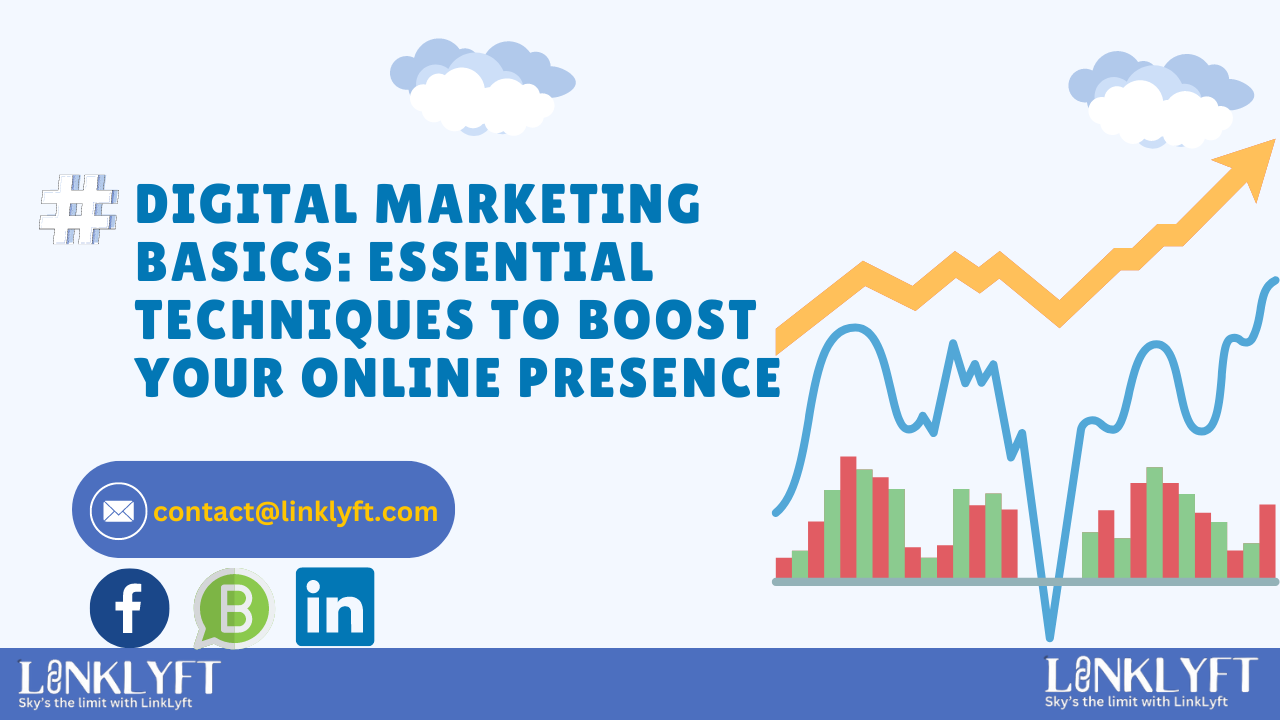Digital marketing refers to using digital channels and technologies to promote and sell products or services. It encompasses a broad range of activities and strategies to reach and engage potential customers online. In this guide, we’ll cover the essential components and concepts of digital marketing to help you get started.
1. What is Digital Marketing?

- Definition: Digital marketing is using digital channels—such as search engines, social media, email, and websites—to reach and engage with target audiences. It involves various tactics and strategies to drive traffic, generate leads, and convert visitors into customers.
- Importance: In today’s digital age, most people spend significant time online. Digital marketing allows businesses to connect with their audience where they are most active and engaged.
2. Key Components of Digital Marketing

- SEO (Search Engine Optimization): The process of optimizing your website and content to rank higher in search engine results pages (SERPs). It involves keyword research, on-page optimization, and link building.
- Content Marketing: Creating and distributing valuable, relevant content to attract and engage your target audience. This includes blogs, articles, videos, infographics, and more.
- Social Media Marketing: Using social media platforms (such as Facebook, Instagram, Twitter, and LinkedIn) to promote your brand, engage with your audience, and drive traffic to your website.
- PPC (Pay-Per-Click) Advertising: Paid advertising where you pay a fee each time your ad is clicked. Google Ads and social media ads are common examples.
- Email Marketing: Sending targeted emails to your audience to promote products, share updates, or nurture leads. It includes newsletters, promotional emails, and automated campaigns.
- Analytics and Data: Tracking and analyzing data to measure the performance of your digital marketing efforts. Tools like Google Analytics provide insights into website traffic, user behavior, and campaign effectiveness.
3. Why Digital Marketing Matters

- Cost-Effective: Compared to traditional marketing methods (like TV or print ads), digital marketing often offers a lower cost with the potential for higher returns.
- Targeted Reach: Digital marketing allows for precise targeting based on demographics, interests, and online behavior, ensuring your message reaches the right audience.
- Measurable Results: With tools and analytics, you can track and measure the success of your campaigns, enabling data-driven decisions and continuous improvement.
4. Getting Started with Digital Marketing

- Set Goals: Define what you want to achieve with your digital marketing efforts (e.g., increase website traffic, generate leads, boost sales).
- Identify Your Audience: Understand who your target audience is and where they spend their time online.
- Choose Your Channels: Select the digital marketing channels that align with your goals and audience preferences (e.g., SEO, social media, email).
- Create a Plan: Develop a digital marketing strategy and plan, including content creation, scheduling, and budgeting.
- Monitor and Adjust: Regularly review your campaign performance, make adjustments based on data, and refine your strategies as needed.
Conclusion
Digital marketing is a dynamic and multifaceted field that requires a combination of strategies and techniques to be successful. By understanding the basics and implementing a well-rounded approach, you can effectively reach and engage your audience, ultimately driving growth for your business.
This foundational guide provides a broad overview to get you started and sets the stage for diving deeper into each aspect of digital marketing in future blog posts.

M.D.Nadeem
Mohammad Dilshad Nadeem, founder of LinkLyft, holds a BCA (2009) and an MBA in Marketing & HR (2012). He freelanced the same year, focusing on SEO and digital marketing. Over a decade, he’s honed his skills, transforming clients’ digital presence. Committed to innovation and excellence, he leads LinkLyft in providing cutting-edge solutions, ensuring clients’ success in the ever-evolving digital landscape.

